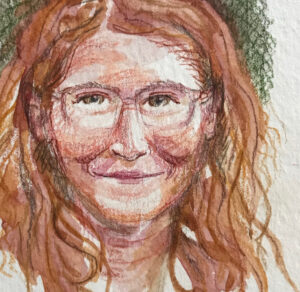INTD 381: Introduction Neuroethics
Introduction to Neuroethics
Syllabus
Spring 2008
Professor Lynn Underwood
INTD 381
Time: 9 30-12 30 Mon Tues Thurs Friday
Class Summary:
Ethical issues that relate to our brains and nervous systems are becoming of increasing importance not just for health professionals but for us all. In this class we will engage with ethical issues arising from new discoveries and technologies in Neuroscience and Cognitive Psychology. We will consider implications for individual action and general policies. We will be exposed to the technologies, philosophical assumptions, and conclusions of the research. Topics introduced will include: moral decision-making and the brain; the interpretation of insights provided by neural imaging (e.g. brain scans); legal responsibility and mental illness; pain and suffering; the effects of psychologically potent drugs and technologies and their appropriate use; the role of and appropriate use of enhancement of mental functioning via drugs and other technologies; and ethics of and mechanisms of brain manipulation by marketing, the media, and other non-medical sources. We will also reflect on how the scientific findings and potential interventions, when combined with other sources of knowledge, have implications for what it means to be human. The text for the course will be “Neuroethics: Defining the Issues in Theory, Practice, and Policy” edited by J. Illes. Films and websites will also be used for resources – one film introducing some basics of brain science through narratives of those suffering from brain diseases ( such as depression, Alzheimers, ADHD and schizophrenia), and a fictional film, “Eternal Sunshine of the Spotless Mind”. A class trip or visit from a professional in the field, such as a neurosurgeon or clinical bioethicist is planned. Grades will be based on class participation, short essays and class presentations, a final project (either a researched essay or a creative narrative project), and final essay exam.
Goals of Course:
To engage with the ethical issues that are arising in Neuroscience and Cognitive psychology
To develop opinions about where you stand on various complex issues in this field
To be able to articulate stands regarding policy options
To come to a clearer understanding of what exactly it means to be human by combining the findings of Neuroscience with those in other areas of knowledge
Text:
Neuroethics: Defining the Issues in Theory, Practice, and Policy,J Illes (editor), Oxford University Press, NY, 2006.
Additional readings: Two overview articles from Trends in Cognitive Science will be sent via email as attachments. There may be additional readings on Sakai, in the library, on the web, or sent to you via email. One key article will be: Farah, Martha J., Neuroethics: the practical and the philosophical, Trends in Cognitive Science 9:1, 2005. P 34-40
Also we will read and watch various stories in books and articles of those with Neuro and Cognitive impairments.
Class schedule
Monday Tuesday Thursday Friday
April 17 Film
April 18 Ethics overview
April 21 Brain disease overview
April 22 Film discussion
April 23 text/readings 2
April 24 discussion
April 25 Articles/Chapters as assigned
April 28 Articles/Chapters as assigned
April 29 Alzheimer’s Chapter 7
April 30 text/readings
May 1 Neurosurgery – Class visit Clinical Ethicist
May 2 Final readings/discussion
May 5Projects
May 6 last dayProjects
May 7 Exam
Weighting of assignments:
40% Class attendance, participation in discussion, quizzes, essays, and brief presentations
30% Final Project
30% Final Essay Exam
Final Project: This will be discussed more fully in class. However, you will take a key issue from class or readings. You will draw from the text and articles, do outside research, take a stand on how it needs to be addressed, and describe impact and relevance for action. You may also draw on philosophy, religious studies, literature, visual art, and film to more clearly make your points. This can be a didactic or a creative work. Use APA format for project if in didactic format. You will present on your project in class and lead discussion on the topic.
 A chapter in a book I am working on explores how we are not machines, yet can be duped into thinking that we are. It is part of a book that centers on how a person can flourish in difficult circumstances. As I was writing it, the Generative AI, Chat GPT, and computer future fears surfaced in the media, and we have been alerted to an acceleration of human-seeming abilities of technology. I found myself concerned with issues that are arising now, rather than long term fears, and wrote a paper for the US Office of Science and Technology Policy with recommendations for action. There are many people who can speak to so many issues raised by AI, but I thought there were some things that were being left out of discussions, and my scholarship in human relationships might be helpful in making recommendations for action and making a case for those.
A chapter in a book I am working on explores how we are not machines, yet can be duped into thinking that we are. It is part of a book that centers on how a person can flourish in difficult circumstances. As I was writing it, the Generative AI, Chat GPT, and computer future fears surfaced in the media, and we have been alerted to an acceleration of human-seeming abilities of technology. I found myself concerned with issues that are arising now, rather than long term fears, and wrote a paper for the US Office of Science and Technology Policy with recommendations for action. There are many people who can speak to so many issues raised by AI, but I thought there were some things that were being left out of discussions, and my scholarship in human relationships might be helpful in making recommendations for action and making a case for those.